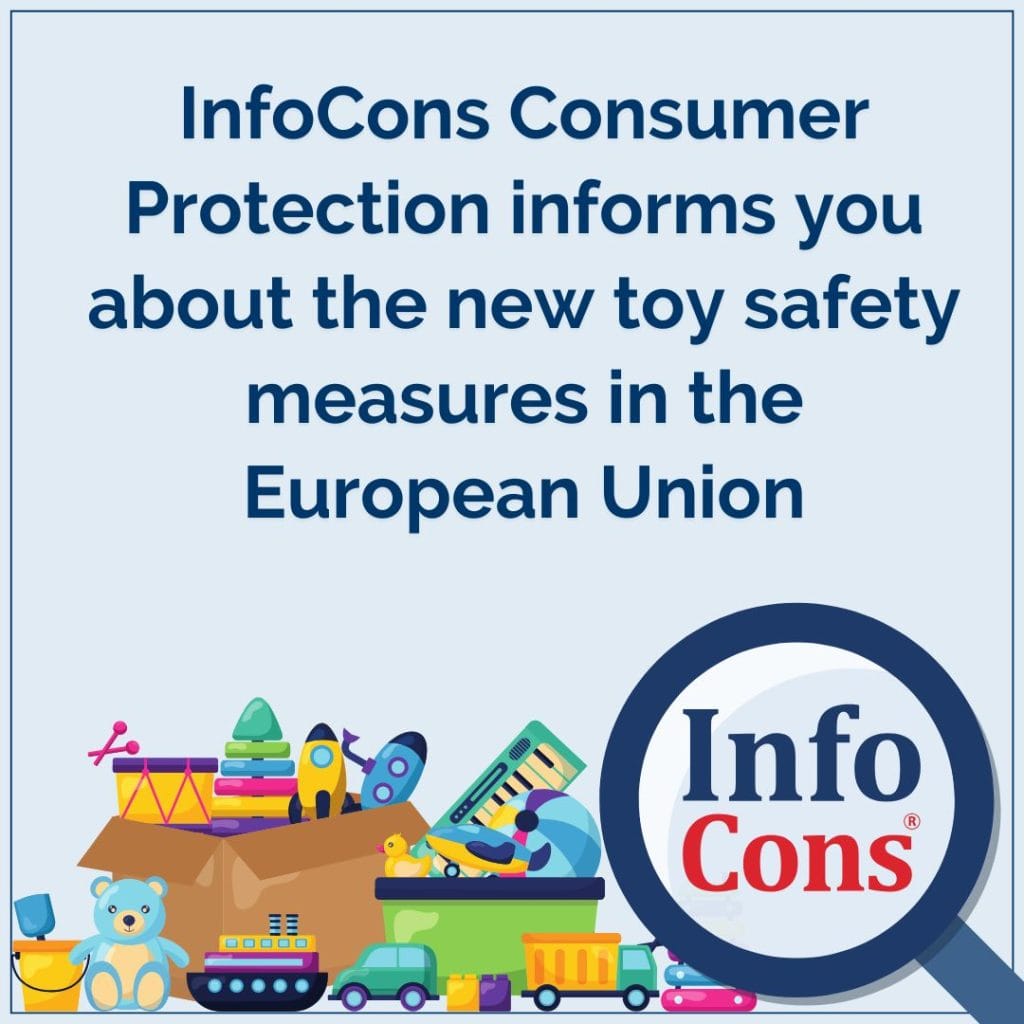
In response to rising concerns over the safety of children’s toys—especially in an age dominated by digitalization and online shopping—the European Union is stepping up its regulatory game. A new draft legislation, recently agreed upon by the European Parliament and the Council of the EU, aims to significantly raise safety standards for toys sold within the EU. This includes stricter rules on hazardous substances, digital safety, clearer safety labeling, and new digital monitoring tools.
The goal is to better protect children’s health, development, and overall safety in an increasingly complex consumer market. These measures come at a critical time, as digital and smart toys gain popularity, and e-commerce continues to reshape how toys are sold and distributed.
Read also : InfoCons Consumer Protection Informs You : Safer Drinking Water in Europe : Measures to Ensure Water Quality
1. Banning Toxic Chemicals for Good
One of the most impactful changes in the new legislation is the extended ban on harmful chemicals in toys. While EU law already prohibited the use of carcinogenic, mutagenic, and reproductive toxic (CRM) substances, the new rules go even further.
Now, chemicals that disrupt hormones (endocrine disruptors), substances that harm the respiratory system or skin, and compounds toxic to organs are being added to the prohibited list. Thanks to Parliament’s push, the legislation will also explicitly ban per- and polyfluorinated alkyl substances (PFASs) and the most hazardous bisphenols, which have raised red flags in recent health research.
Additionally, toys intended for children under three years old—or toys meant to be mouthed—will be prohibited from containing allergenic fragrances, marking a major win for infant safety.
2. Enhanced Toy Safety Assessments Before Hitting the Shelves
Before any toy can be sold on the EU market, manufacturers will now be required to perform a comprehensive safety assessment. This includes an evaluation of various potential risks—chemical, mechanical, physical, and even electrical hazards.
The assessment process must also account for flammability, hygiene, and radioactivity, and consider age-specific vulnerabilities of children. For instance, if a toy has digital features, manufacturers need to ensure it does not negatively impact a child’s mental well-being or emotional development—an area of concern growing alongside interactive and internet-connected toys.
Read also : InfoCons Consumers Protection informs you about emergency numbers worldwide !
3. Defining Responsibilities for All Economic Operators and Online Platforms
The legislation clearly outlines the roles and responsibilities of all economic actors involved in the toy market—from manufacturers and importers to distributors and fulfillment service providers (those who store, package, and ship the toys).
This update aligns the toy safety rules with other major EU laws like the General Product Safety Regulation, the Ecodesign Framework, and the Digital Services Act. Together, these create a harmonized set of responsibilities, especially important in the context of cross-border e-commerce.
Moreover, online marketplaces—such as Amazon and eBay—will be required to adapt their platforms to display important safety information, including the CE mark, mandatory warnings, and a QR code linking to the toy’s digital product passport. These elements must be clearly visible before customers finalize a purchase.
4. Introducing the Digital Product Passport (DPP)
A standout innovation in the new regulation is the introduction of the Digital Product Passport (DPP). This digital record, which will be required on all toys sold within the EU, will serve as a comprehensive guide to a toy’s compliance with EU safety laws.
Accessible via QR code or similar technology, the DPP will provide details on safety tests, material composition, and compliance certification. It’s not just a win for consumers—customs and market surveillance authorities will also benefit from faster and more accurate checks, which will help prevent unsafe or counterfeit toys from entering the market.
Read also : Eliminating toxins from baby formula – InfoCons Consumer Protection supports their safety !
5. Addressing Online Shopping and Cross-Border Sales
As the popularity of online shopping continues to rise, especially for children’s toys, the new legislation ensures digital platforms do not become a loophole for unsafe products. Sellers operating via online marketplaces will be held accountable for ensuring product safety standards are met.
This includes making vital information—like hazard warnings and the digital passport—visible and accessible at the point of sale. These steps aim to close regulatory gaps in the digital retail environment and improve accountability.
6. Timeline for Implementation and Next Steps
The legislative process is in its final stages. After the “early second reading” agreement between Parliament and Council negotiators, the text will move forward for formal adoption. First, the Council must approve the agreement, followed by final endorsement in the European Parliament plenary session.
Once published in the EU Official Journal, the regulation will come into force 20 days later. EU member states will then have 54 months to fully align their national legislation with the new rules—providing manufacturers, retailers, and enforcement bodies enough time to adjust.
Read also : InfoCons Consumers Protection Informs You – Simple Ways to Reduce Food Waste
A Safer Future for Children’s Playtime in the EU
These landmark updates to EU toy safety legislation are a crucial step forward in ensuring that every toy on the market prioritizes children’s health and safety. Whether it’s removing dangerous chemicals, improving digital transparency, or increasing accountability across the supply chain, the new measures reflect a modern, proactive approach to consumer protection.
Parents can breathe a little easier knowing that the toys they buy—whether in-store or online—will soon have to meet stricter and smarter safety standards across the board.
Source : The European Parliament
InfoCons – European Organization for Consumer Protection and Promotion of Programs and Strategies , a full member of the World Organization Consumers International , founding member of the Federation of Consumer Associations , and member of ANEC .